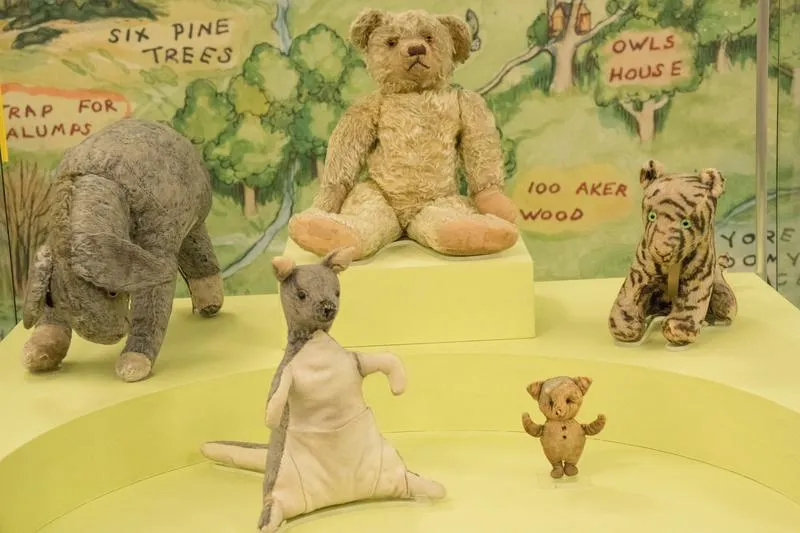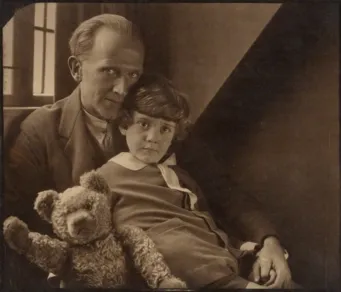Original Pooh Bear Gets Makeover, Returns to New York Public Library
Winnie and his friends are clean, fluffy and filled with stories
/https://tf-cmsv2-smithsonianmag-media.s3.amazonaws.com/filer/04/ba/04badc92-0704-49e4-8b50-62fa6972b8a5/sasb_2016_08_03_pooh_opening-03105.jpg)
Deep in the Hundred-Acre Wood (and long before Disney got its paws on the story), a stuffed bear and a little boy named Christopher Robin made magical rounds. The story of how a British playwright found inspiration in his son’s stuffed animals is just as sweet. And now, those very animals—the real-life Winnie-the-Pooh and friends—can be viewed by the public after a year-long makeover.
The New York Public Library recently announced that Pooh Bear, Tigger, Eeyore and other stuffed animals who inspired A.A. Milne’s Winnie-the-Pooh books have returned to the Children’s Room. The animals, which were donated to the library in 1987, are 95 years old and needed some TLC before being displayed for another generation of children to enjoy.

From stuffing and sewing repair to a steaming and fluffing of his rear end, Pooh is almost like new again. His friends are, too: As the library writes on its blog, “Piglet had his snout adjusted; Kanga had her head straightened; Tigger had his bottom fluffed,” and Eeyore had 52 patches removed and repaired.
Winnie-the-Pooh and friends got their start as playthings of Christopher Robin Milne, the son of a British soldier and playwright named Alan Alexander Milne. While his father studied mathematics while attending Cambridge, he pursued literature instead and gained fame as a contributor to the infamous British humor magazine, Punch.
Soon, he was rubbing shoulders with figures like J.M. Barrie, Rudyard Kipling and Sir Arthur Conan Doyle, where they played on what may have been the world’s nerdiest amateur cricket team, the Allahakbarries. (Yes, the team’s name was a particularly cringeworthy pun.) After serving in World War I, Milne had a son and began to write funny stories about Christopher Robin and his beloved bear.

Ironically, both Christopher Robin and his father grew to hate Winnie-the-Pooh, though the books that bore the bear’s name were wildly successful. As Amanda Ruggeri writes for the BBC, the fame that followed traumatized the young boy and overshadowed Milne’s entire literary output.
If that seems like a depressing end to an otherwise uplifting saga about a boy and his bear, don’t despair. Like it or not, Pooh and friends are still known worldwide. And now, thanks to painstaking restoration, they will be new friends to the next generation of visitors to the New York Public Library.
/https://tf-cmsv2-smithsonianmag-media.s3.amazonaws.com/accounts/headshot/erin.png)
/https://tf-cmsv2-smithsonianmag-media.s3.amazonaws.com/accounts/headshot/erin.png)